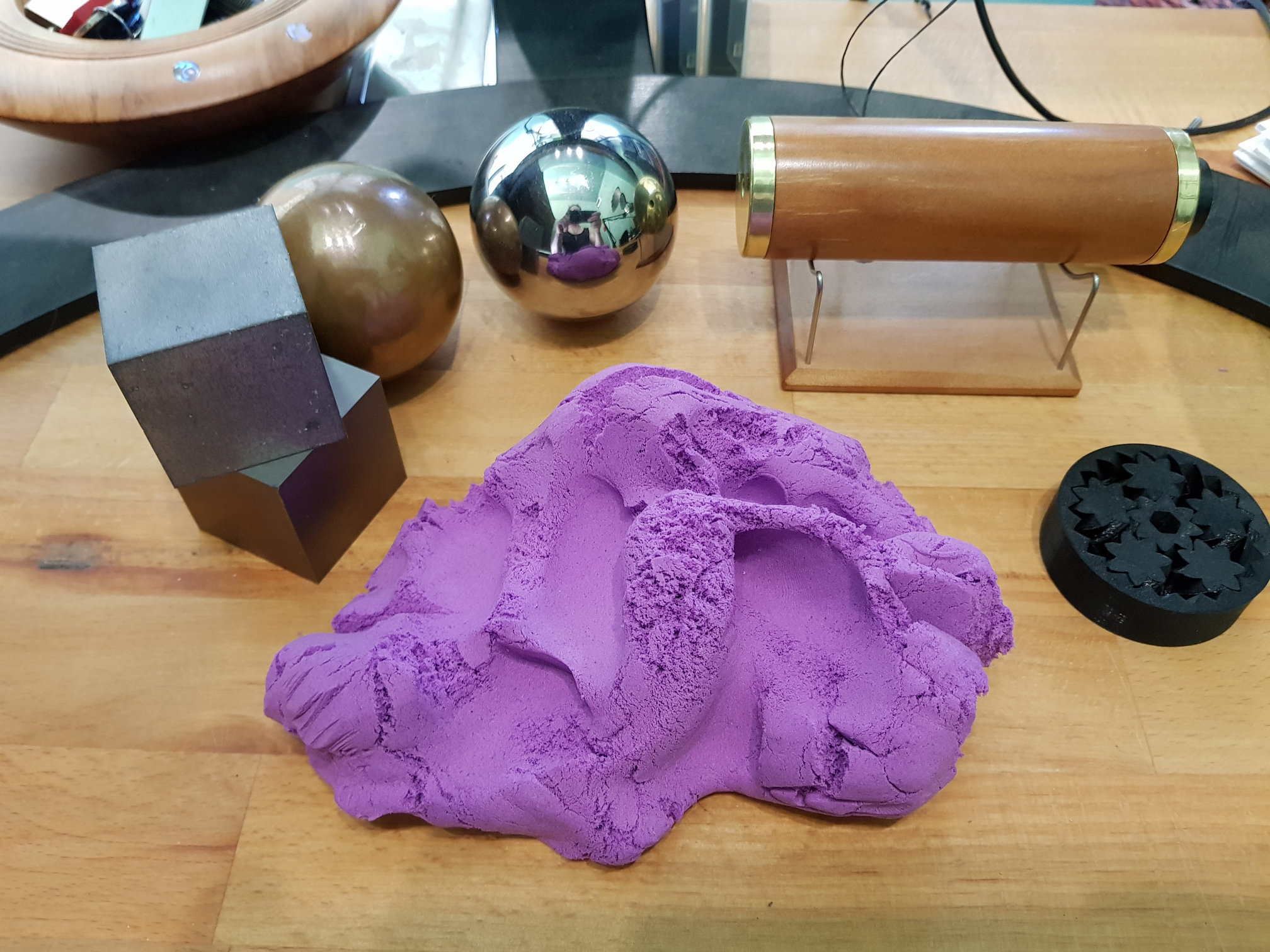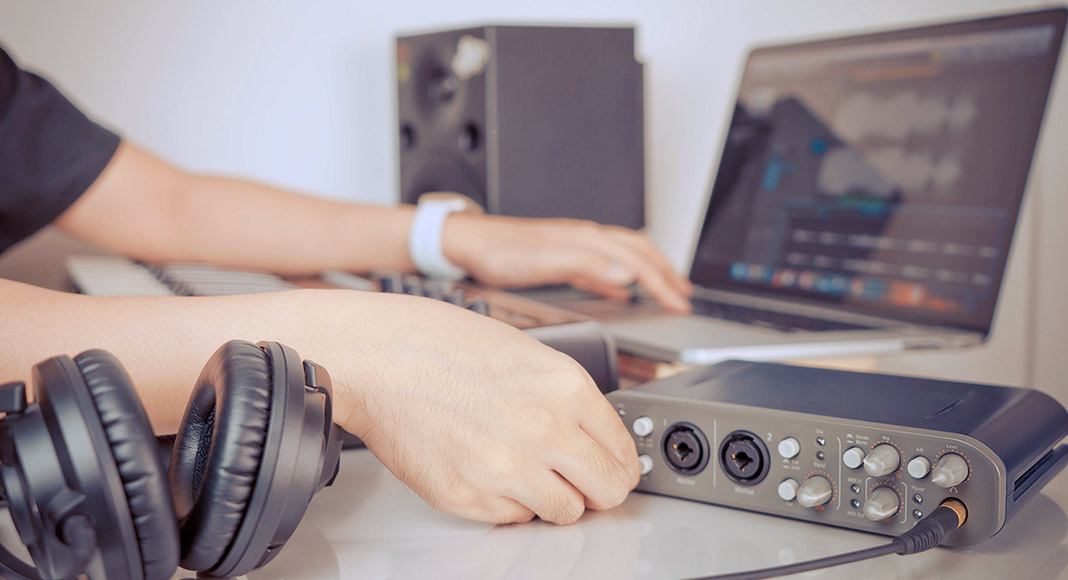The holidays are coming, but any time of year is a good time to add things to your list of gear you’d love to have. Whether it be a mic upgrade, making your space sound better, deciding on a new pop filter or even a few ideas for things to tinker with on your desk, we’ve rounded up some great options.
Some of our pros and coaches discuss the studio tech gear they love, what they would like to add to their studios, and which mics they recommend for someone who is just starting.
In this article
- Toby Ricketts:
- Ron Allan
- Jason McCoy
- Other Studio Tech Gear for Voice Actors to Consider
- Creating Your Own Studio Involves a Personal Approach
Toby Ricketts:
Q. Which microphone is on your wish list and why?
A. I used to use the ‘dream’ Neumann U 67, a classic vintage $12,000 microphone, which had a lovely sound but was very bulky and impossible to take on the road. I’ve now found my perfect home and travel mic in the form of the [vintage] Neumann KMi 84 pencil condenser, for $1000! When I changed, my clients never noticed! I have two in case one stops working and I have a deadline.
Q. What are some booth accessories you can’t live without?
A. An anglepoise stand, so the mic stays where you put it, a metal pop filter to get rid of those pesky plosives, and a dog clicker, which will save you hours in post-production by creating a visible click on your screen when you make a mistake for later editing. Plus an assortment of nifty desk toys to keep your hands from fidgeting when reading long scripts!

Q. Which microphone do you recommend for new voice talent?
A. Rode Microphones offer some great products at great prices, such as the entry-level NT1-A, NT2-A, or for a portable option, the NT5, but for professional quality you can’t go past Neumann who has been the masters for a long time!
Much more important than your microphone, however, is your room treatment!
To find out more about Toby Ricketts, visit his site.
Ron Allan
Q. Which microphone is on your wish list and why?
A. Ever since I started my own studio and became aware of what good quality audio sounds like I’ve wanted a Neumann U 87. I was recorded on one once and never forgot how good my voice sounded. Santa…are you listening?
Q. What are some booth accessories you can’t live without?
A. If by ‘accessories’ you mean equipment, then essential to my booth are good quality studio monitors, which are critical for listening for pops and clicks but also for variety of frequencies. Next would be my Aphex Channel mic preamp.
Q. Which microphone do you recommend for new voice talent?
A. One of the best all-purpose voice over mics for new, and even experienced talent, is the VO-1A from Harlan Hogan. At only $299 it’s affordable for most talent and it’s packaged with a mic cable, shock mount, and carrying case. All my pro package students receive one of these mics.
To learn more about Ron Allan, visit his site.
Jason McCoy
Q. Which microphone is on your wish list and why?
A. My favorite go-to mic in my studio is the Neumann TLM 103. It’s a large diaphragm condenser mic that provides a very warm, clean and crisp sound. A much less expensive mic that sounds very close to the TLM 103 is the MXL V67G. (For a sample, check out this article.)
Q. What are some booth accessories you can’t live without?
A. I’ve gone through many pop filters over the years, fabric and plastic ones. The Stedman Proscreen XL pop filter is different. It’s a stronger, better-built pop filter that uses something like metal as the windscreen. It’s high quality and does a great job of preventing plosives.
Q. Which microphone do you recommend for new voice talent?
A. There are so many great-sounding microphones available for under $100. Some of my favorites would be the MXL V67G, CAD GXL2200 and Samson C01.
To learn more about Jason McCoy, visit his site.
Other Studio Tech Gear for Voice Actors to Consider
Of course, your studio is more than just your mic. Here are some other considerations when outfitting or upgrading your studio.
While one of the keys to making great sound is to minimize the flat surfaces your voice can bounce off of, there are lots of ways you can achieve that.
If you’re not able to invest in a booth, but you don’t want to be in a closet, there are smaller-scale options. The Kaotica Eyeball is one such example. The theory is that instead of trying to make the space all around you acoustically sound, it isolates your microphone to reduce the noise that gets fed into that microphone. These are far more portable than other options and are favored for their ability to make recording on the road much easier.
Sound on Sound looked at 10 portable recording booths and ranked them to see if they did what they said they would. The overall conclusion is that they do reduce some external noise, though some work better than others. It’s also advised that you take additional measures to reduce sound when using a screen, including using a microphone with a cardioid pickup pattern (instead of an omnidirectional mic) and hanging a blanket behind you for sound absorption.
If you’re in a space that sounds good, but you’d like to upgrade to a portable booth or make it sound even better, there are options like the WhisperRoom that may help. There are also in-window treatments you can use to reduce sound.
Some people may not believe that they need a pop filter, but if you’d like one GEARANK made a great list of pop filters. They take into account what the filter is made out of, how big it is, and how it attaches to your microphone (i.e. gooseneck and mounting features). It also includes a comprehensive list of pros and cons, along with an overall ranking of the pop screen.
Creating Your Own Studio Involves a Personal Approach
Making a space your own can be part of the joy of creating a studio. Sure, it needs to be acoustically suitable for the recordings you’re going to create, but it can also be a space you genuinely enjoy and be treated in ways that improve your sound and, hopefully, result in booking more work.
All the elements in your audio chain need to be considered as your audio is only as strong as its weakest link. Finding out what studio tech gear you’d like to use and what you’d like to surround yourself with may take some trial and error, but in the end knowing you created a studio space that you love, that books you work and that you want to be in is a great balance.

Leave a Reply